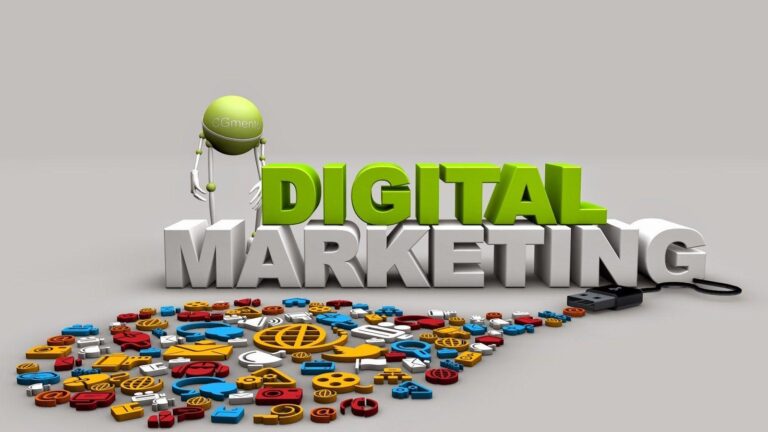Lost in Translation?
How AI and Human Expertise are Reshaping Travel Communication.
A captivating and benefit-driven headline that effectively communicates your unique value proposition.
AI-powered translation gives travelers instant access to information, while human expertise provides the cultural context and nuanced understanding that make every trip feel personal.
This powerful partnership ensures every detail is understood perfectly, from local customs to safety tips, so you can focus on the adventure without any confusion.
The AI-Powered Passport: Unlocking a New World of Travel with Human Touch.
The Ultimate Guide to Perfecting Your Global Message.
The world is a magnificent, sprawling tapestry of cultures, and the travel industry is the golden thread that connects them. But what happens when that thread is tangled by a simple word? We’ve all seen it: a hotel sign promising «the warm toilet water» instead of a «hot shower,» or a restaurant menu offering «burnt coward» instead of «grilled chicken.» These hilarious and often disastrous mistranslations are more than just a punchline; they are a stark reminder of the fragile nature of global communication.
The travel industry relies on flawless translation to build trust, create unforgettable experiences, and drive revenue. But with the incredible speed and accessibility of AI tools like ChatGPT and DeepL, a new question has emerged: Can we hand over our global voice to a machine? This article will dive deep into this fascinating dilemma. We’ll explore the embarrassing pitfalls of relying too heavily on AI, uncover the irreplaceable value of human expertise, examine the technological innovations that are bridging the gap, and finally, look to the future of a powerful hybrid translation model that combines the best of both worlds.
The art of connecting, not just converting.
Your brand’s story is your most valuable asset. It’s too important to be lost in translation. Let’s make every word resonate with authenticity.
The Pitfalls of AI in Travel Translation.
When Robots Get It Wrong: Why Literal Translation Fails the Travel Industry.
In an age where speed and efficiency are king, the appeal of a free, instant machine translation tool is undeniable for any business looking to reach a global audience. However, in the travel industry, where human connection and authentic experience are the ultimate currency, an over-reliance on artificial intelligence is a gamble with profound consequences. The danger isn’t just a simple mistake; it’s a fundamental failure to communicate the very essence of a brand, a culture, or a promise.
We’ve all chuckled at the absurdities: a hotel’s welcome sign declaring, «The manager has received your complaint and has been taken care of,» instead of a simple «Your feedback has been received and will be addressed.» Or the classic menu blunder, where an item meant to be «freshly shucked oysters» becomes the less appetizing «newly born oysters.» These aren’t just funny anecdotes; they are a symptom of a deeper problem: AI’s inability to grasp context, nuance, and cultural subtext.
AI translation tools operate on a word-for-word or phrase-for-phrase basis, lacking the situational awareness to understand the true meaning behind a message. A human translator knows that «suite» can mean a hotel room or a legal case, but a machine might choose the wrong one based on frequency alone. A phrase as simple as «Enjoy your stay» can be translated into a cold, literal command, stripping it of the warmth and hospitality a traveler expects. This is a crucial distinction: AI translates text, but a professional translates meaning.
Why AI Lacks the Human Touch: Beyond Literal Words.
The limitations of machine translation become profoundly apparent when we consider what truly makes a travel experience exceptional. It’s not just about words; it’s about feelings, emotions, and cultural respect.
- Cultural Nuance and Adaptation: A human translator is not just a language expert; they are a cultural bridge. They understand that a marketing campaign for a «romantic getaway» needs to be completely re-imagined for different cultures. In some, it might be a private, couple-focused experience, while in others, it’s a family-inclusive celebration. A machine has no framework for this kind of cultural adaptation, a process known as transcreation. The result is a generic message that fails to resonate and, in some cases, can even be offensive.
- Emotional Tone and Brand Voice: Every brand has a voice—whether it’s playful, luxurious, adventurous, or reassuring. AI, however, is tone-deaf. It cannot differentiate between a casual, inviting headline and an urgent safety warning. This can lead to a hotel website that sounds robotic and impersonal, or a tour guide’s instructions that lack the necessary authority, eroding trust and undermining the very promise of the brand.
- Humor, Idioms, and Slang: These are the building blocks of authentic language, and they are completely lost on a machine. An AI tool will translate a phrase like «it’s raining cats and dogs» literally, creating a nonsensical and confusing message. This lack of understanding can transform a witty, engaging piece of marketing copy into an awkward and forgettable one.
Ultimately, the issue isn’t whether AI is «wrong,» but that it is fundamentally incapable of being human. A recent study by the localization company CSOFT found that 62% of travelers find it difficult to trust brands that use poor-quality translations. In a competitive industry where reputation is everything, these communication failures are a risk few businesses can afford to take. The profound lesson here is that while AI can offer speed, it cannot offer the empathy, creativity, and cultural intelligence that form the bedrock of a truly successful global travel brand.
Cultural nuance is the secret ingredient in travel.
AI is fast, but it can’t build an emotional connection. We go beyond words to create experiences that truly resonate.
Where Human Translators Still Dominate.
The Irreplaceable Human Touch: Why Expertise Matters More Than Ever.
While AI offers a quick fix for basic communication, the travel industry’s most critical and high-value needs still rely on the irreplaceable expertise of professional human translators. These linguistic artisans do more than just convert words; they are cultural consultants, brand guardians, and crisis communicators who understand that the true goal of translation is not to copy text, but to forge authentic human connection.
The fundamental difference lies in a concept called transcreation. This is the art of completely re-imagining content for a new market, ensuring it evokes the same emotional response as the original. A machine can’t do this; it lacks the cultural intelligence and creative flair required to make a message resonate. Consider Airbnb’s iconic «Belong Anywhere» campaign. A direct, literal translation wouldn’t have had the same impact in every country. Instead, their marketing team, working with skilled travel industry translation experts, adapted the core message to fit local mindsets. In some regions, the focus was on the joy of discovery; in others, it was about finding a home away from home. This strategic, culturally-aware adaptation is what made the campaign a global success and a prime example of human-driven transcreation. It’s not just about what you say, but how you say it, and a human translator is the only one who can make those critical, nuanced decisions.
Beyond Marketing: The Human Imperative.
The need for human translators extends far beyond catchy slogans and website localization. It is absolutely essential in high-stakes situations where an error can have devastating consequences.
- Crisis Communication: In the event of a natural disaster, political unrest, or a global health crisis, clear and accurate communication is paramount. An automated system might struggle with urgent, localized dialects or medical terminology, potentially putting travelers at risk. A human translator, on the other hand, can instantly adapt to new information, ensuring safety instructions, emergency protocols, and medical information are conveyed with absolute clarity and precision. For example, a traveler experiencing a medical emergency would need a professional to accurately translate symptoms and medical history, a task where a machine’s error could be life-threatening.
- Expert Insight: Human translators bring an incredible depth of knowledge to their work, from understanding local legal terminology for contracts to navigating the subtle differences in tone required for luxury travel content versus budget backpacking guides. Their expertise is what separates a generic, forgettable message from an authentic, authoritative one.
According to travel localization expert, Anya Sharma, «AI is a brilliant tool for raw speed and volume, but it can’t feel. It can’t understand the nostalgia of a traveler reminiscing about their trip, or the excitement of a new adventure. The human translator’s job is to capture that emotion and deliver it flawlessly. We are the guardians of a brand’s voice and the bridge to a truly meaningful connection.» This is where services like those offered by Oris Translations’ dedicated travel and tourism translation page become invaluable. They offer the deep linguistic and cultural expertise that ensures every word, from a complex tour itinerary to a simple welcome message, resonates with authenticity.
Capture the emotion, not just the words.
Your brand’s story deserves to be told with authenticity and cultural intelligence. Let us connect you to the world with genuine human expertise.
Tech Innovations Bridging the Gap.
Tools That Are Changing the Game for On-the-Go Travelers.
While we’ve established that AI struggles with the creative and cultural nuances of language, it is by no means an enemy of effective communication. On the contrary, a new wave of technological innovations is bridging the gap, providing travelers with powerful, AI-driven tools for real-time interactions. These technologies are not meant to replace professional travel industry translation but rather to empower travelers and businesses with instant solutions for low-stakes, on-the-go scenarios.
The modern traveler has an array of tools at their fingertips that would have seemed like science fiction just a decade ago. For spontaneous conversations with a local or a taxi driver, tools like Google’s Interpreter Mode offer a seamless, live conversation experience. The app listens, translates, and speaks out loud, allowing for basic back-and-forth dialogue. Similarly, Augmented Reality (AR) apps such as Google Lens are revolutionizing how we navigate unfamiliar places. By simply pointing a phone’s camera at a street sign, a menu, or a brochure, travelers can see an instant, translated overlay on their screen, making it easier to navigate a new city or order a meal.
In the realm of voice technology, purpose-built devices are taking these capabilities to the next level. Pocket translators like Pocketalk offer dedicated hardware for more reliable translations, often in a greater number of languages than a standard app. For a more subtle and seamless experience, translation earbuds from companies like Timekettle allow for real-time conversations without the need to hold a device. These tools are fantastic for basic interactions—like asking for directions or ordering a coffee—providing a safety net for travelers and a crucial first layer of communication.
However, the most significant innovation is in how these technologies are being integrated into professional workflows. Platforms like Smartling are pioneering a hybrid model where AI is used for the initial translation of large volumes of content, such as hotel descriptions or attraction listings. A human translator then steps in as a «smart editor» or post-editor, refining the machine’s output for accuracy, tone, and cultural context. This approach marries the speed and scalability of AI with the precision and expertise of human professionals, proving that the future isn’t about choosing one or the other, but about intelligently combining their strengths.
Speed and accuracy, working together.
We use cutting-edge technology to accelerate the process, then apply expert human insight to perfect every detail.
The Future: Hybrid Translation Models.
The Best of Both Worlds: A Synergistic Approach.
Having explored the limitations of AI and the profound necessity of human expertise, it’s clear that the future of travel industry translation is not an either/or proposition. The most successful and forward-thinking travel companies are already embracing a hybrid translation model—a powerful synergy where technology handles the heavy lifting, and human experts provide the final, irreplaceable touch of quality and cultural authenticity.
This model is built on a simple yet effective principle: use AI for volume and speed, and use humans for value and nuance.
- AI for Scalability: Imagine a global hotel chain needing to translate 10,000 property descriptions and guest reviews into dozens of languages. Manually translating this volume of content would be a massive, time-consuming, and expensive undertaking. Here, AI-powered systems can provide a rapid, initial draft, ensuring all content is made available to a global audience in a fraction of the time. This scalability is a game-changer for large-scale, data-intensive projects.
- Humans for Quality Control: Once the initial translation is done, a professional human translator steps in as a post-editor. Their role is not to start from scratch but to refine the AI’s output, correcting errors, injecting the brand’s voice, and ensuring cultural and contextual accuracy. This is particularly crucial for high-value content like marketing campaigns, luxury travel brochures, and destination guides, where a single mistranslation could undermine a brand’s credibility.
Emerging Trends Defining the Future.
The hybrid model is also at the forefront of new trends that are reshaping how we communicate with travelers.
- Hyper-Localization and Gen Z Travel Trends: A human translator can recognize and adapt to niche cultural phenomena that an AI would completely miss. Consider the «van life» movement—the trend of living and traveling in a converted vehicle. A direct translation into Spanish might result in «vida de furgoneta,» which sounds clunky and uninspired. A professional translator, however, would recognize that the term is often adapted more creatively in different Spanish-speaking markets, or they might choose a more evocative phrase that resonates with the target audience. This level of hyper-localization is essential for connecting with younger demographics and niche travel communities.
- Ethical AI in Translation: Another critical area is the ethical application of AI. Machine translation often carries gender, racial, or cultural biases from the data it was trained on. For example, a machine might default to masculine pronouns for certain professions. A human editor’s role is to act as a crucial ethical safeguard, correcting these biases and ensuring all communication is inclusive, respectful, and reflective of a brand’s values.
This evolution is creating a new, highly specialized role for linguists: the smart editor. They are not just translators; they are trainers, guiding and refining AI models to produce better output over time. This collaborative future promises to deliver not only faster, but also more accurate and culturally sensitive, translations than ever before.
A powerful partnership for perfect translations.
We blend AI speed with human insight, delivering a new standard of quality, speed, and cultural accuracy.
Conclusion: The Bridge Between AI and Humanity.
We began with a simple question: In an era of advanced AI, how can the travel industry perfect its global message? The answer is a powerful blend of human expertise and technological innovation. While AI offers unprecedented speed and scalability for high-volume content, it is fundamentally incapable of capturing the cultural nuance, emotional resonance, and creative intent that make a travel experience truly authentic. Professional human translators, therefore, are not an outdated alternative but a vital strategic partner. The future belongs to the hybrid model, where intelligent automation provides the foundation, and the irreplaceable human touch provides the soul.
Translation isn’t just about words—it’s about connection.
Beyond language, we build connections.
Your Questions, Answered: The Hybrid Translation Advantage.
The journey to flawless global communication often comes with questions. This introduction to our FAQs will shed light on how professional translation services address the specific challenges of the modern travel industry, ensuring your content is both accurate and culturally resonant.
Ready to elevate your global brand?
Stop taking risks with your communication. Partner with a team that understands the art and science of connecting with your audience.
Contact us for a free quote.
Want to learn more? Here are a few more questions we frequently encounter:
Unlock Your Global Potential Today!
Need your tourism content to speak to a worldwide audience? Fill out our form to connect with our expert team and get a free quote for your translation needs.






